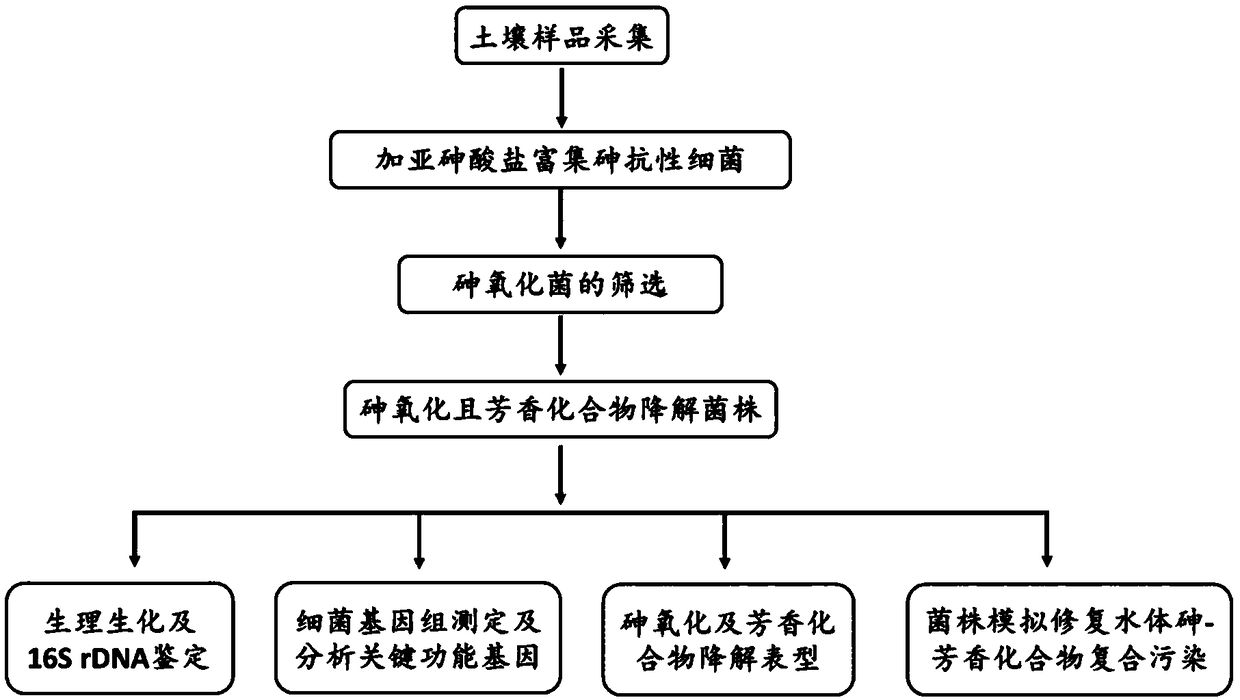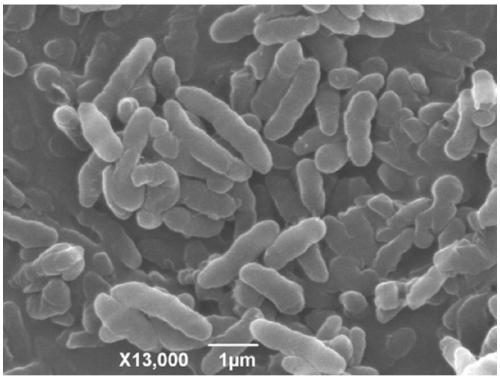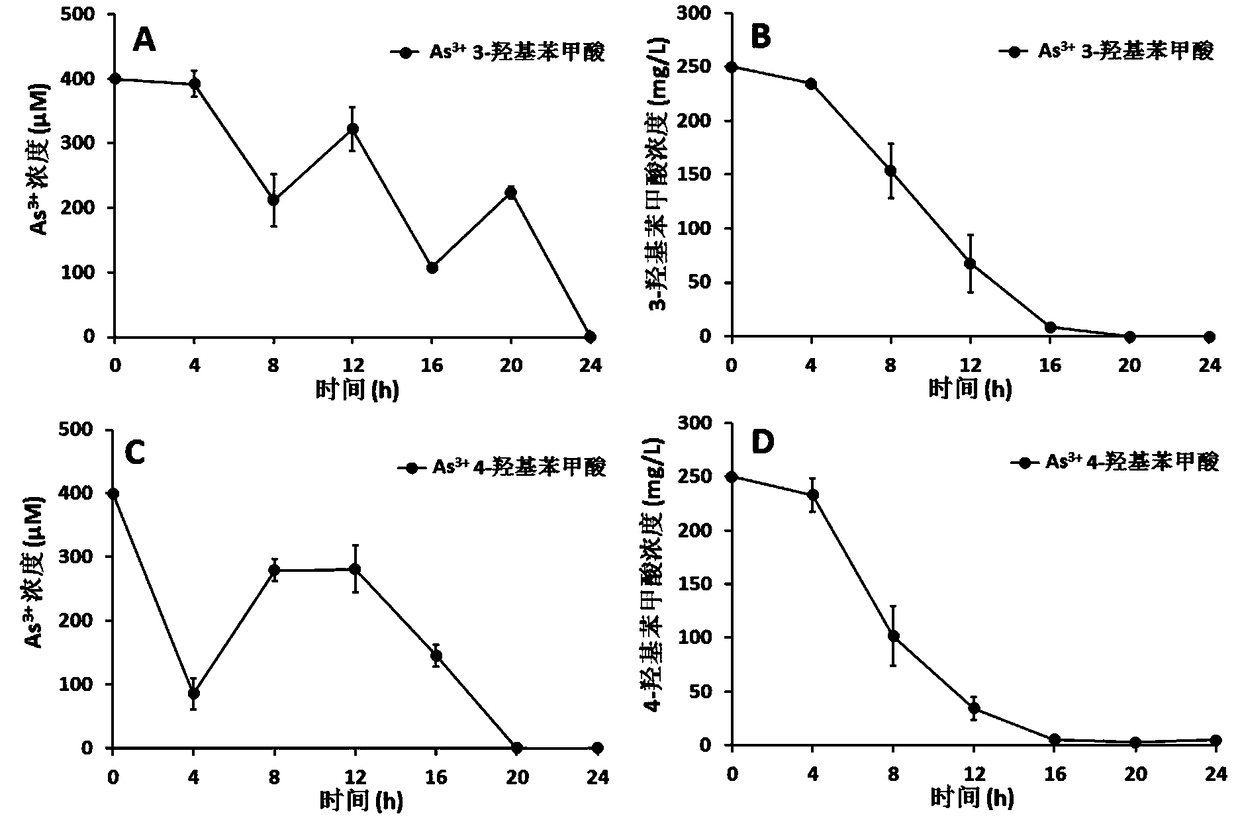Hydrogenophaga sp. H7 capable of degrading aromatic compounds and removing nitrogen and arsenic, and application thereof
A technology of phagocytosis and ability, applied in the field of hydrogen phagocytosis H7, can solve the problems of long repair period, unsuitable water pollution treatment, secondary pollution, etc.
- Summary
- Abstract
- Description
- Claims
- Application Information
AI Technical Summary
Problems solved by technology
Method used
Image
Examples
Embodiment 1
[0024] Example 1: Hydrophage H7 was isolated from the soil of Dayejin Mine, Hubei
[0025] (1) Sample collection: The surface soil of a copper-iron mine in Daye City, Hubei Province, China was collected in May 2010.
[0026] (2) Sample enrichment: Accurately weigh 100g of soil sample into a 250mL sterilized Erlenmeyer flask, add 5mL of 80mM sodium arsenite NaAsO 2 (As(III)), stir gently and place in an incubator at 28°C for one week, pay attention to add sterile water to ensure that the sample is not dry.
[0027] (3) Isolation of arsenic-resistant bacteria: Accurately weigh 10 g of As(III)-enriched soil sample into a Erlenmeyer flask filled with 90 mL of sterile normal saline, shake it in a shaker at 28°C for half an hour, and then take 1 mL to 9 mL sequentially Dilute stepwise to 10 in sterile saline -3 、10 -4 、10 -5 , respectively take 0.1mL coated with MMNH containing 400μM As(III) 4 For solid medium plates, 3 plates were coated for each dilution, and cultured in a 28...
Embodiment 2
[0034] Example 2: Arsenic Oxidation Curve, 3-Hydroxybenzoic Acid and 4-Hydroxybenzoic Acid Degradation Curve and Nitrate Reduction Curve of Hydrogenophage H7
[0035] Pick a single clone of Hydrophage H7 and inoculate it into 100 mL of R2A liquid medium, and culture it in a shaker at 28°C until OD 600 It is about 0.45, it is used as seed liquid, is inoculated in fresh 100mL 1 / 10ST liquid culture medium (initial OD 600 <0.01), and add 40 μL of 1M As(III) to the medium to make the final concentration to 400 μM. In addition, 250 μL of 100 g / L 3-hydroxybenzoic acid and 4-hydroxybenzoic acid were added to the medium at the same time to make the final concentration to 250 mg / L, and they were placed in a shaker at 28°C for shaking culture. Samples were taken every 4 hours. Take 1.0 mL each time to measure the concentration of trivalent arsenic As(III) and pentavalent arsenic As(V) and the concentration of 3-hydroxybenzoic acid and 4-hydroxybenzoic acid. The concentration of trival...
Embodiment 3
[0040] Example 3: Hydrophage H7 has the effect of oxidizing trivalent arsenic, the degradation effect of 3-hydroxybenzoic acid and 4-hydroxybenzoic acid and the effect of reducing chemical oxygen demand (COD) in simulated composite polluted water
PUM
 Login to View More
Login to View More Abstract
Description
Claims
Application Information
 Login to View More
Login to View More - R&D
- Intellectual Property
- Life Sciences
- Materials
- Tech Scout
- Unparalleled Data Quality
- Higher Quality Content
- 60% Fewer Hallucinations
Browse by: Latest US Patents, China's latest patents, Technical Efficacy Thesaurus, Application Domain, Technology Topic, Popular Technical Reports.
© 2025 PatSnap. All rights reserved.Legal|Privacy policy|Modern Slavery Act Transparency Statement|Sitemap|About US| Contact US: help@patsnap.com



